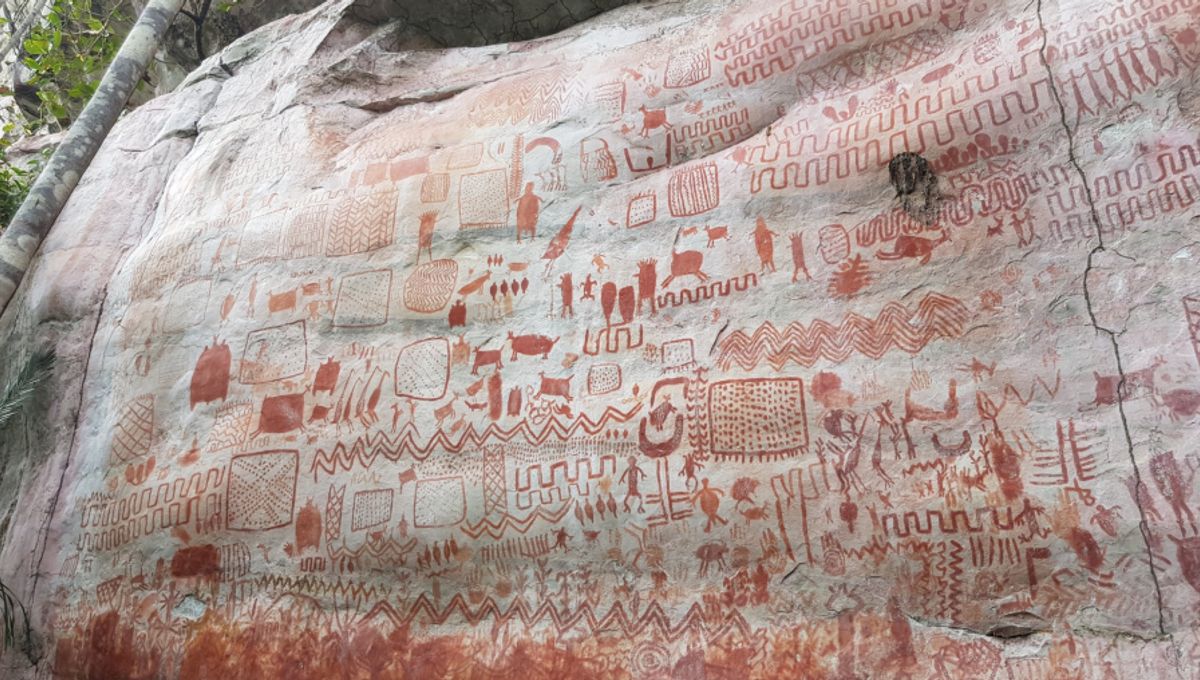
A new analysis of human activities at two prehistoric sites in the Colombian Amazon has revealed that people were well established in the region by around 13,000 years ago. By studying layers of soil, researchers were able to tease out the long-term history of both settlements, indicating that the ancient inhabitants began producing rock art more than 10,000 years ago and eventually took up farming some eight millennia later.
“The ‘peopling’ of South America represents one of the great migrations of human history – but their arrival into the Amazon biome has been little understood,” explained study author Mark Robinson in a statement. “Our recent excavations, however, help to fill this gap, not only dating their arrival to much earlier than previously understood, but also providing novel insights into their lives and historical trajectories during the Holocene.”
First discovered by Robinson and his team during fieldwork conducted in 2017 and 2018, the two rock shelters form part of a series of settlements within the Serranía La Lindosa region, at the edge of the Amazon. It was here that the researchers found one of the world’s largest collections of prehistoric rock art, covering a 13-kilometer (8-mile) stretch of rock face.
Painted in red ocher, the ancient artworks depict some of the now-extinct megafauna that inhabited the region during the Ice Age, including mastodons and giant sloths. However, until now, little was known about what went on at the site during the thousands of years that it was in use.
After studying the distribution of stone tools, charcoal, and food waste in different layers of soil, the researchers were able to identify four waves of activity. The first of these corresponds to the late Pleistocene and early Holocene, from around 12,600 to 10,000 years ago.
Evidence for the grinding of red ocher can be found in these layers, suggesting that the practice of painting the walls began with the earliest inhabitants of Serranía La Lindosa. “All of the rock shelters exhibit ochre paintings from the earliest occupations, indicating that those pioneers were also recording and making sense of this new world they encountered,” explained study author Dr Jo Osborne.
In their write-up, the researchers say that these primordial paintings “could well record the origins of an Amazonian cosmovision and way of viewing and living in the world.” Based on the animal remains present at the site, the authors were also able to discern that the earliest occupants ate piranhas, capybaras, snakes, crocodiles, caimans, and turtles, among other species.
Subsequent phases of occupation were dated to the early to middle Holocene (9,500–5,900 years ago), the initial late Holocene (4,100–3,700 years ago), and the late Holocene (3,000–300 years ago). Only during this final phase did the study authors identify the presence of Amazonian Dark Earth, a type of super-rich soil cultivated by ancient farmers throughout the Amazon region.
Interestingly, the rock shelters appear to have been abandoned for thousands of years during the mid-Holocene, between about 6,000 and 4,000 years ago. “The reason for this abandonment is currently unclear”, write the authors, who also explain that similar desertions are known to have occurred at other Amazonian sites during this period.
Summing up the team’s findings, study author José Iriarte said that “the results firmly establish that the human occupation of Serranía La Lindosa began in the late Pleistocene, about 12,600 years ago, and continued until the 17th century,”
“The exceptional number of rock shelters found in the region with evidence of human habitation suggest that this area was an attractive landscape for forager groups, where they could access palm-dominated tropical forest, savannah, and riverine resources,” he added.
The study is published in the journal Quaternary Science Reviews.
Source Link: Rock Art Featuring Ice Age Giants Proves Humans Settled The Amazon 12,600 Years Ago